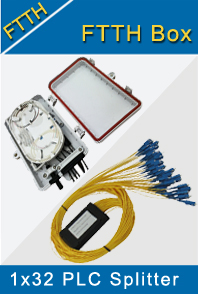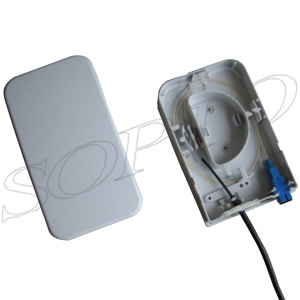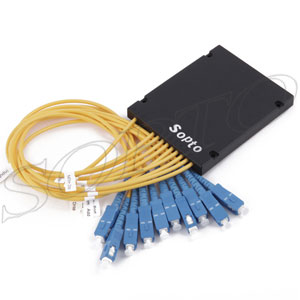-

- Sopto Home
-

- Special Topic
-

- FTTH Knowledge
-

- Is WDM-PON the Next Big Thing for FTTH?
FTTH Knowledge
- Solving the FTTH Rollout Problem in Multiple Dwelling Units
- WDM PON Introduction FAQ
- A Simple Overview of Optical Power Meter
- ODN is based on PON FTTH Optical Cable Network of the Device
- Using an OTDR to be an Expert in Fiber Link Testing
- How FTTH Broadband Works?
- Connections among Fiber Terminal Boxes & Patch Cables & Pigtails
- Easy to Install a Fiber Terminal Box
- What is Arrayed Waveguide Grating?
SOPTO Special Topic
Certificate



Guarantee
Except products belongs to Bargain Shop section, all products are warranted by SOPTO only to purchasers for resale or for use in business or original equipment manufacturer, against defects in workmanship or materials under normal use (consumables, normal tear and wear excluded) for one year after date of purchase from SOPTO, unless otherwise stated...
Return Policies
Defective products will be accepted for exchange, at our discretion, within 14 days from receipt. Buyer might be requested to return the defective products to SOPTO for verification or authorized service location, as SOPTO designated, shipping costs prepaid. .....
Applications

Sopto supply the best FTTH solutions for your network!
SOPTO Products
- Fiber Optic Transceiver Module
- High Speed Cable
- Fiber Optical Cable
- Fiber Optical Patch Cords
- Splitter CWDM DWDM
- PON Solution
- FTTH Box ODF Closure
- PCI-E Network Card
- Network Cables
- Fiber Optical Adapter
- Fiber Optical Attenuator
- Fiber Media Converter
- PDH Multiplexers
- Protocol Converter
- Digital Video Multiplexer
- Fiber Optical Tools
- Compatible
Related Products
Performance Feature
FTTH Knowledge
Recommended

Is WDM-PON the Next Big Thing for FTTH?
One of the hot topics today is wavelength division multiplexing passive optical network, or “WDM-PON,” and for good reason. In a nutshell, WDM-PON is a next-gen access technology that provides a dedicated, secure wavelength to each end user in a network, enabling huge subscriber density over just a single fiber. This type of architecture can bring significant advantages over a traditional PON network in which wavelengths are “split” between multiple users, up to 16 or 32 in most cases.
Perhaps the greatest advantage of WDM-PON is that it enables a very long reach, up to 100 kilometers. This results in lower capex and opex, as fewer sites are needed between the CO (central office) and the end user.
What’s more, the technology brings more bandwidth to the home – much more – with speeds of 1/2.5 Gbps and higher. This makes it possible for operators to deliver bandwidth-hungry, next-gen applications like high-definition 3D streams to consumers’ homes. EPON and GPON simply can’t achieve this capacity.
WDM-PON is also more secure than other PON technologies. Since traffic moves over dedicated links, there is no traffic sharing. But that’s not all. Because WDM-PON requires less fiber, it takes up significantly less space above ground, effectively negating the need for multiple COs and local exchanges. In sharp contrast, point-to-point FTTH (fiber-to-the-home) technologies require the use of large amounts of equipment and fiber in numerous locations.
It’s no surprise, then, that WDM PON is gaining momentum with operators and is expected to play a major role in future access deployments. Longer term, it will be one of the most widely available technologies for supporting fiber shorts in the CO consolidation process.
Digging deeper: a closer look
WDM-PON technology comes in two flavors: WDM-PON [1:1] and hybrid WDM PON [1:N]. WDM PON [1:1] brings an independent wavelength to the curb or to the end user. Because residential customers may not need this level of bandwidth, this version is more cost effective for business applications such as cellular or access backhaul.
The other flavor, hybrid WDM PON [1:N] is used to convey EPON or GPON over WDM-PON. In other words, to send multiple PON signals over a single fiber from a regional CO to the first split point. At this point, each wavelength is split from the main fiber to an independent fiber, and then through a passive splitter that passes the signal to multiple subscribers. As it enables huge subscriber density over a single fiber, this flavor of WDM-PON is ideal for small to medium enterprises and residential customers.
Another important issue is maintenance. Maintaining multiple residential end users, each with a different fixed wavelength SFP (small form-factor pluggable) transceiver, can be a costly endeavor. To reduce this burden, colorless SFP technology can be used on the user’s side or both sides (the CO and end user). It works like this: the colorless SFP at the user’s premises is used to transmit the upstream signal over the same wavelength as the downstream signal, passively adapting the correct color without the need for pre-configuration and tunable lasers.
These technological advances make WDM-PON an attractive value proposition for operators looking to streamline operations and cut costs.
Standardization & deployment
Although there is talk that WDM-PON isn’t standardized or that it’s years away from mass adoption, the truth is the technology’s based on Ethernet, a protocol that’s well standardized and ubiquitous. WDM-PON can already be found in limited deployment in places like Korea. More widespread deployment is anticipated in the next few years, as costs drop as operators of all types begin adopting the technology for the inherent advantages it provides.
MSOs (multiple system operators) are turning to WDM PON to help overcome the intrinsic limitations (fiber availability and distance) of point-to-point FTTH. And at least one leading service provider in Europe is exploring long-reach WDM-PON [1:N] . Also in Europe, the FP7 (Seventh Framework Programme), a leading research program, is working on many projects based on the technology, with hefty budget resources invested and support from major vendors and operators alike.
Although the WDM-PON story is still unfolding, it’s clear the technology holds much promise and could be ‘the one’ to actually unleash FTTH’s full potential.
For more info, please browse our website.





